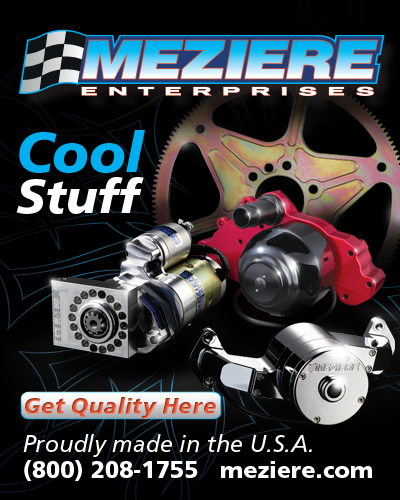JIM ROCKSTAD REMEMBERS: SEATTLE'S 64 FUNNY CARS, PT 5
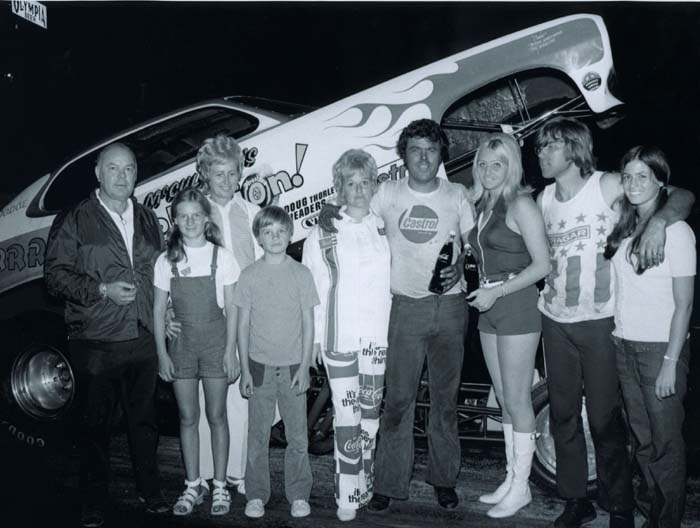 nowhere could I find where the shows were much more than match races with two, four, six, or maybe eight funny cars. Orange County International Raceway (OCIR) had the manufacturers’ team race annually but nothing in the format, size and impact that 64 Funny Cars was about to have at SIR.
nowhere could I find where the shows were much more than match races with two, four, six, or maybe eight funny cars. Orange County International Raceway (OCIR) had the manufacturers’ team race annually but nothing in the format, size and impact that 64 Funny Cars was about to have at SIR.Nowhere was there going to be any event even close to the scale of the “Seattle Giant”.
The cars in these early times were able to run at events up to four times a week in the highly-populated East Coast, but SIR was the only place where this monster event was about to take place. It sure made sense to me that many of the named stars of the sport would want to be involved with the biggest Funny Car event anywhere, and of course, winning it would be one major accomplishment.
“Hey Doner, How are you going to get all those funny cars to the Northwest?”
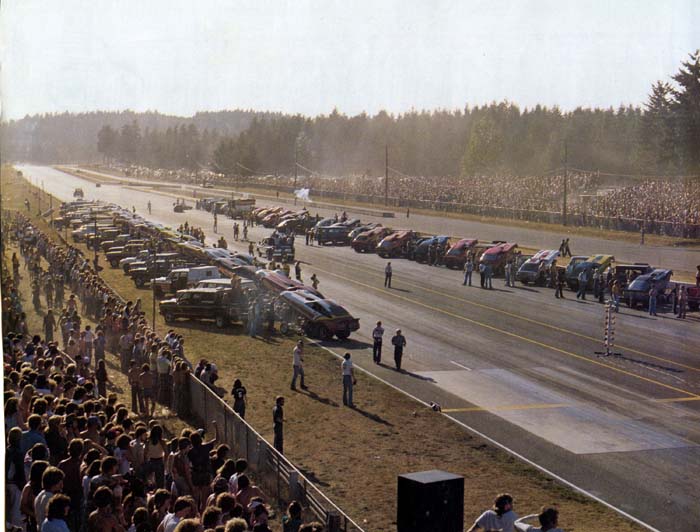
It’s interesting to note that in all the research I did to complete this story of the early 1970s, Funny Car events were very popular in all parts of the country. But

Nowhere was there going to be any event even close to the scale of the “Seattle Giant”.
The cars in these early times were able to run at events up to four times a week in the highly-populated East Coast, but SIR was the only place where this monster event was about to take place. It sure made sense to me that many of the named stars of the sport would want to be involved with the biggest Funny Car event anywhere, and of course, winning it would be one major accomplishment.
Bill Doner announced at the Seafair Funny Car Championships in August of 1972 that he would convert that event into 64 Funny Cars for the next year. The response, in itself, was amazing. Everyone within earshot of the pa system at SIR seemed to be aghast by the very possibility. How could anything be better than what had just taken place?
Just wait, folks.
Can you imagine the risk here? About 75% of the cars that would be needed for the bigger event must travel thousands of miles just to get to the often-rainy Northwest. With one rain shower on race day in 1973 Doners’ whole house of cards would go tumbling down. This financial gamble would have been crushed with just a small squall of rain coming through. Talk about stressful! Whew!
On the positive side - let’s focus there - Doner had a full year to make it all happen. And there were many skeptics, for sure. Doner quipped, “It seemed like most of the sport was saying you cannot get the front-line stars of the sport to drive all the way to Seattle”.
That’s what “they” said - but not Doner. As always, he had developed a plan.
He knew that he needed to bring the best to the debut of 64 Funny Cars. He needed the “named stars” of the sport to gain the credibility for this independent event. Just having a huge number of funny cars wouldn’t be enough … the NBA does it with their All-Star Game, why not an all-star event for drag racing with
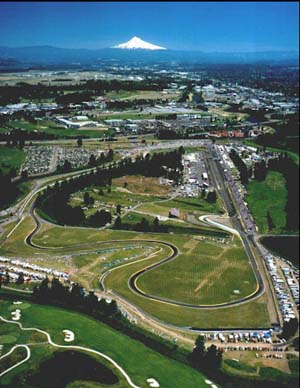
Doner can be very convincing and that is what it took to bring in the stars of the sport.
To bring to the Northwest the likes of Gene Snow, Jungle Jim Liberman, The Hawaiian, Danny Ongais; Raymond Beadle, The Coca Cola Cavalcade group; John Collins; Big Jim Dunn; Don Prudhomme, Tom McEwen, Lil’ John Lombardo, Ed McCulloch, Dale Pulde, Al Bergler, Flash Gordon Mineo and on and on and on, would take more than just SIR to pull it all off.
This massive undertaking just had to be the largest logistical undertaking of all time in this sport. Not only did Doner have to be convincing to bring all these cars together to the Northwestern part of the USA but he had to cut deals for each one of them … and then, in most cases, get them other races while they were here. It was mass administration just to pull all of these parts together along with locating the cars, events and who goes where and when.
Doner knew that to attract that many stars of the sport he would need the support of other facilities throughout the Northwest. Expanding the current 32-car show to 64 cars would take some creative ability to get the potential cars additional race dates in the Northwest, both before and after his new event. Accomplishing additional bookings for the cars would work best if he could “control some of the facilities and the promotions in each market”. That would allow him the flexibility to promote and organize those events for the best results … turns out, amazing results.
There was no way to attract that many cars to just one event in Seattle because it is so far from so much of the United States - it’s often called Southern Alaska. A lot of the cars would be coming from the Midwest, the East Coast and Southern California, all traveling a great distance to get to the Seattle area. Additional bookings would allow more front-line cars to attend the new 1973 expanded event.
He would need all the cars he could get his hands on … and then some.
How do you pull all of this together? Just organizing that many Funny Cars must be a nightmare. But, once again, Doner was up to the challenge.
Doner knew that he would have to just about “drain a considerable amount of the country of funny cars” to fulfill his vision with the debut of the “Big One”. If he could pull it off it would be one “monster event” annually in the Northwest. Only the best-ever line-up of front-line cars would make it successful.
As things turned out, Portland International Raceway at Delta Park in Portland, Oregon became a good place to start. The track’s promoter in 1972 was experiencing financial difficulty and was released from his operating agreement for the city-owned facility. The City of Portland was looking for someone to strengthen the existing drag racing program and to bring in bigger and better drag races.
It was perfect timing for Bill Doner.
Doner could see the PIR possibility might be perfect for what he was looking for, a stepping-stone for many of the cars a week prior to the 64-car show in Seattle.
The gorgeous park-like facility, just north of Portland, was a perfect addition to the up and coming mid-summer mania that was being planned in Doners’ mind. With the major market of Portland, Oregon just minutes away from the race track Doner had to be salivating at the promotional potential that existed there. He would be “bombing” the whole area with his style of hyped, hard-selling, often funky radio ads.
The addition of Portland International Raceway fit perfectly into his plan.
A contract was reached with the City of Portland and Doner’s Corporation, which was located in Washington State. It was an exciting time for Doner. He could see his chances of quality cars for the first-ever 64 Funny Car show were coming into focus. His first step for Portland was to lock-in a 32-Funny Car event the week prior to the Seattle event.
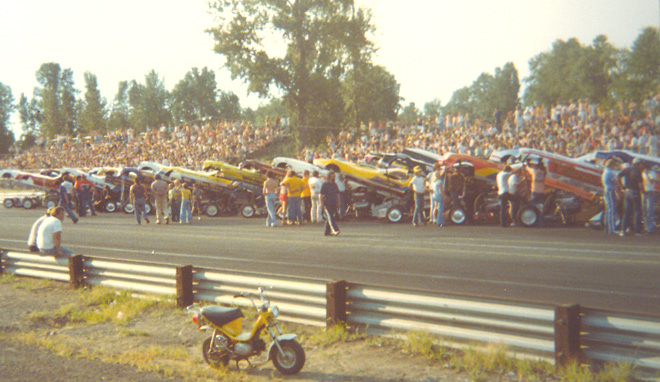
PART 1 - JIM ROCKSTAD REMEMBERS SEATTLE'S 64 FUNNY CARS
PART 2 - JIM ROCKSTAD REMEMBERS SEATTLE'S 64 FUNNY CARS
PART 3 - JIM ROCKSTAD REMEMBERS SEATTLE'S 64 FUNNY CARS
PART 4 - JIM ROCKSTAD REMEMBERS SEATTLE'S 64 FUNNY CARS
{source}
<div style="float:left; padding:5px;">
<script type="text/javascript"> sr_adspace_id = 2000000613807;
sr_adspace_id = 2000000613807; sr_adspace_width = 300;
sr_adspace_width = 300; sr_adspace_height = 250;
sr_adspace_height = 250; sr_ad_new_window = true;
sr_ad_new_window = true; sr_adspace_type = "graphic";
sr_adspace_type = "graphic";
</script>
<script type="text/javascript" src="http://ad.afy11.net/srad.js?azId=2000000613807">
</script></div>
<div style="padding:5px;"><script type="text/javascript">
google_ad_client = "pub-8044869477733334";
/* 300x250, created 4/3/09 */
google_ad_slot = "2028912167";
google_ad_width = 300;
google_ad_height = 250;
</script>
<script src="http://pagead2.googlesyndication.com/pagead/show_ads.js" type="text/javascript"></script>
</div>{/source}




























